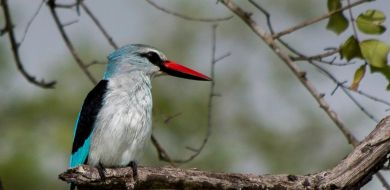The Impala Lily
on Dec 14, 2014As we move closer to winter the nights get longer and the rains all but cease. The bush slowly starts to lose its colour as the summer grasses and flowers wilt away. Drab browns and yellows cover the reserve and the trees start to lose their foliage, opening up the landscape. But even in this dry, almost dead-looking terrain there are still some flashes of colour to wow the senses. That colour is supplied by the stunning Impala Lily, whose bright pink stands out like a beacon in an environment almost devoid of colour.

This lily will start flowering around July, which is the height of winter in the Sabi Sabi area, and can flower as late as September. It is very hard to explain the reaction of our guests to the beautiful flower as we drive through the bush - suddenly the brilliant pink and white dazzles your eyes as if they have just been opened after a long sleep.
This plant contains a watery latex which is highly toxic. Domestic animals have been known to die after consuming it, but amazingly there have been no noted deaths in wild animals that feed on the Impala Lily. The latex is extracted from the bark and trunk and is prepared as a poison for the tips of hunting arrows and also as a poison to stun fish. The latex is also made into a "magical potion" used by many different African cultures both in South Africa and Mozambique.
The poisons within the Impala Lily latex are known to contain over 30 types of chemicals that can affect the heart. This is not necessarily all negative, as, when given in the correct dosage and mixed in with the right medicinal ingredients, it could possibly be used in the treatment of cardiac arrest.
There are certain species of the Impala Lily that are used by the Heikom Bushmen of Namibia. The latex from these species is reputed to kill large antelope within 100 metres of them being pierced by an arrow tip. Other San cultures use different species of the Impala Lily as treatments for snakebites and scorpion stings.
So the next time you are in our part of the world during winter, have a look out for the beautiful and interesting Impala Lily.






